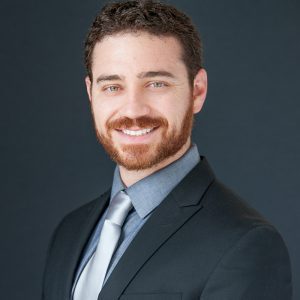Making an informed decision…
To complete our top 10 list, the upcoming questions include topics on: Laboratory Procedures, Dosage or Concentration of Platelet or Bone Marrow Concentrate cells, Injectate Placement Procedure, Contraindications for a Procedure, and Candidacy for a Procedure.
In Part 1 of the Top 10 Questions to ask when considering a regenerative procedure, we discussed Physician Experience, Patient Outcomes, Physician Specialty, Source of Injectate, and Injectate Harvest Methods. In that discussion, tips and resources are provided to guide a patient’s informed decision-making for an orthopedic procedure. Especially when it comes to regenerative procedures, a lot of clinicians are jumping on the bandwagon, but not necessarily upholding the standards that physicians from the Regenexx Network do. Read more here on how our physicians are trained, and what standards they uphold within the realm of nonoperative orthopedics.
6. Laboratory
What Is the Classification of the Laboratory You Use?
The biggest differentiation in lab classifications is an “open” system or a “closed” system. This is simply related to the amount of sterility and cleanliness a lab uses when processing your tissue to the injectable platelet rich (PRP) or bone marrow concentrate (BMAC). An “open” system exposes tissue samples to open air, where they are susceptible to contamination by bacteria. A “closed” laboratory system keeps tissue samples in a germ-free environment. A dedicated cell-biology lab performs air-quality and sterility checks, and uses protective gear, to provide the highest possible assurance that your stem cells will be safe from contamination.
Additionally, the lab processing procedure varies in terms of precision. Some clinics claiming they perform PRP do so by spinning a patients blood sample in a simple tabletop centrifuge. At Regenexx, we use a highly complex system of lab-processing with proprietary methods for the concentration of the blood or bone marrow tissue most effectively to get PRP or BMAC with the most cells, growth factors, and other pro-regenerative substances. A non-specific processing of blood can lead to inconsistent PRP concentrations and inconsistent outcomes. Also, Regenexx has laboratory technicians that are trained specifically in sterility and concentration techniques. The lab processors focus on this task all day, every day, so are highly skilled at what they do.
The takeaway: Ask about the clinic’s laboratory processing classification and procedures.
7. Dosage
Do You Know the Concentration of Cells That will be Reinjected?
When you take medicine or receive a prescription, dosing is key, right? Well, PRP and BMAC are no different. Dosing in regenerative procedures is key. Our clinical laboratory technicians, like mentioned above, are highly trained in the techniques that Regenexx uses within the closed laboratory system to concentrate the best, regenerative cells. The processing within a Regenexx lab removes the less useful tissues, including inflammatory agents, producing a highly purified concentration of PRP or BMAC.
As mentioned in #6, the Laboratory section, a table-top centrifuge is a common yet insufficient method to concentrate regenerative tissues. The more precise the lab-processing, the more specific the dosage. The more specific the dosage, the more consistent the procedure. This also circles back to #2, or Outcomes Reporting, because Regenexx uses consistent lab processing in affiliate clinics from California to Florida, we are confident the patients reporting from that same geographic spread are receiving consistency in the quality and concentration of the PRP of BMAC product in their procedures.
The takeaway: Ask the provider how they isolate, concentrate, and count the number of stem cells.
8. Placement
How Will You Ensure the Proper Placement of the Cells When Injected?
Where the PRP or BMAC cells are placed matter. The success and outcome of a regenerative procedure can be determined by the precision of this placement. In fact, if the PRP or BMAC is injected even an eighth of an inch off of the target treatment area, it can mean a major difference for the patient. A lot of clinics use what are called “blind” injections, meaning, the PRP is injected without imaging. The PRP or other cells, in this case, are injected directly into a joint, with no precision.
Again, considering the success of a procedure could have a tiny margin of error, it is a non-negotiable to have the treatment performed with image guided precision.
The takeaway: Ask the provider what form of imaging they use to guide the injections
9. Contraindications
What Should I Avoid That Could Detract From My Procedure?
When a new patient visits Regenexx at New Regeneration Orthopedics (NRO), the physician will evaluate their current medications and recent treatment history. Many substances that are used in pain management actually have a cytotoxic effect, meaning that they kill living cells. In the case of a regenerative procedure, if the cells from PRP or BMAC are exposed to chemicals that could result in cell death, the procedure won’t be as effective as if the environment within the patient is healthier.
To name a few medicines our physicians screen for in an evaluation that could interfere with a successful procedure are:
- Local anesthetics: lidocaine or bupivacaine/marcain can kill your cells, so ensure your treating physician isn’t using local anesthetics
- High-dose Steroid Injections: steroid injections for orthopedic conditions are performed in mega-doses causing damage and cell death to cartilage and regenerative tissues. It is important there is six to twelve weeks gap after a steroid injection and before a PRP injection so the steroid might be processed from the body and not interfere with the PRP/BMAC success.
- Prescription medications: some medications can have a negative effect on mesenchymal cells and ultimately interfere with your procedure’s success.
The takeaway: Make sure you disclose all recent treatments and medications to your NRO physicians so they can time your procedure within a window that would be effective. Ask your physician for a list of prohibited medication, including when you should stop the medication before the procedure and when you can resume post procedure.
10. Candidacy
How Do I Know If a Regenerative Procedure Is Right For Me?
The good and challenging of a regenerative procedure is because it is not a one size fits all procedure. Each patient is different, each case is different, each set of circumstances are different, and even each joint/body region has different outcomes as according to our registry data. A great physician will talk you through the benefits of a regenerative procedure for your condition, the risks or limitations of a procedure for your condition, and what alternative options might be available to you for your best outcome.
At NRO, our physicians are first and foremost interested in you having a positive outcome with your procedure, so they will be honest with you about the possible success as well as limitations of a regenerative procedure.
The takeaway: Ask the physician what your expected treatment outcome is and what the evaluation is based on.
Still have questions? Don’t hesitate to contact one of our experts to answer any of your questions or concerns.










